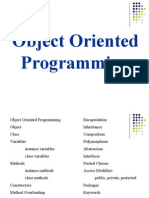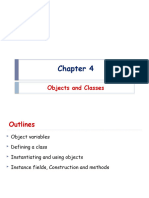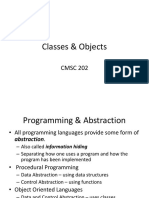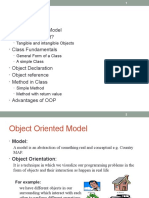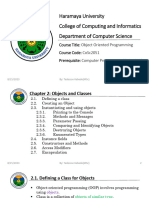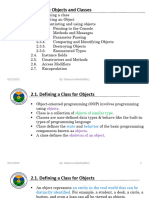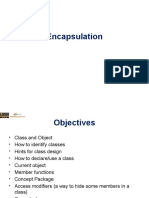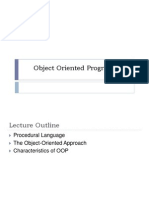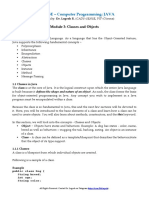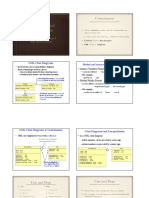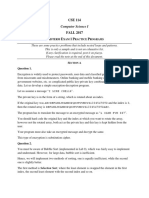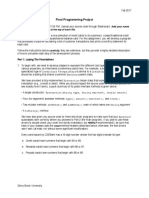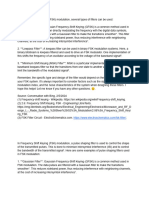0% found this document useful (0 votes)
70 views4 pages07 Objects Classes v2
Objects are bundles of data and code that represent things in a program. Classes define the structure of objects, including their data and behaviors. Individual objects are instances of a class. Constructors initialize new object instances by setting initial values for data. Objects encapsulate and manage their own data privately through methods, protecting it from external changes.
Uploaded by
urbedglvbhCopyright
© © All Rights Reserved
We take content rights seriously. If you suspect this is your content, claim it here.
0% found this document useful (0 votes)
70 views4 pages07 Objects Classes v2
Objects are bundles of data and code that represent things in a program. Classes define the structure of objects, including their data and behaviors. Individual objects are instances of a class. Constructors initialize new object instances by setting initial values for data. Objects encapsulate and manage their own data privately through methods, protecting it from external changes.
Uploaded by
urbedglvbhCopyright
© © All Rights Reserved
We take content rights seriously. If you suspect this is your content, claim it here.
/ 4










